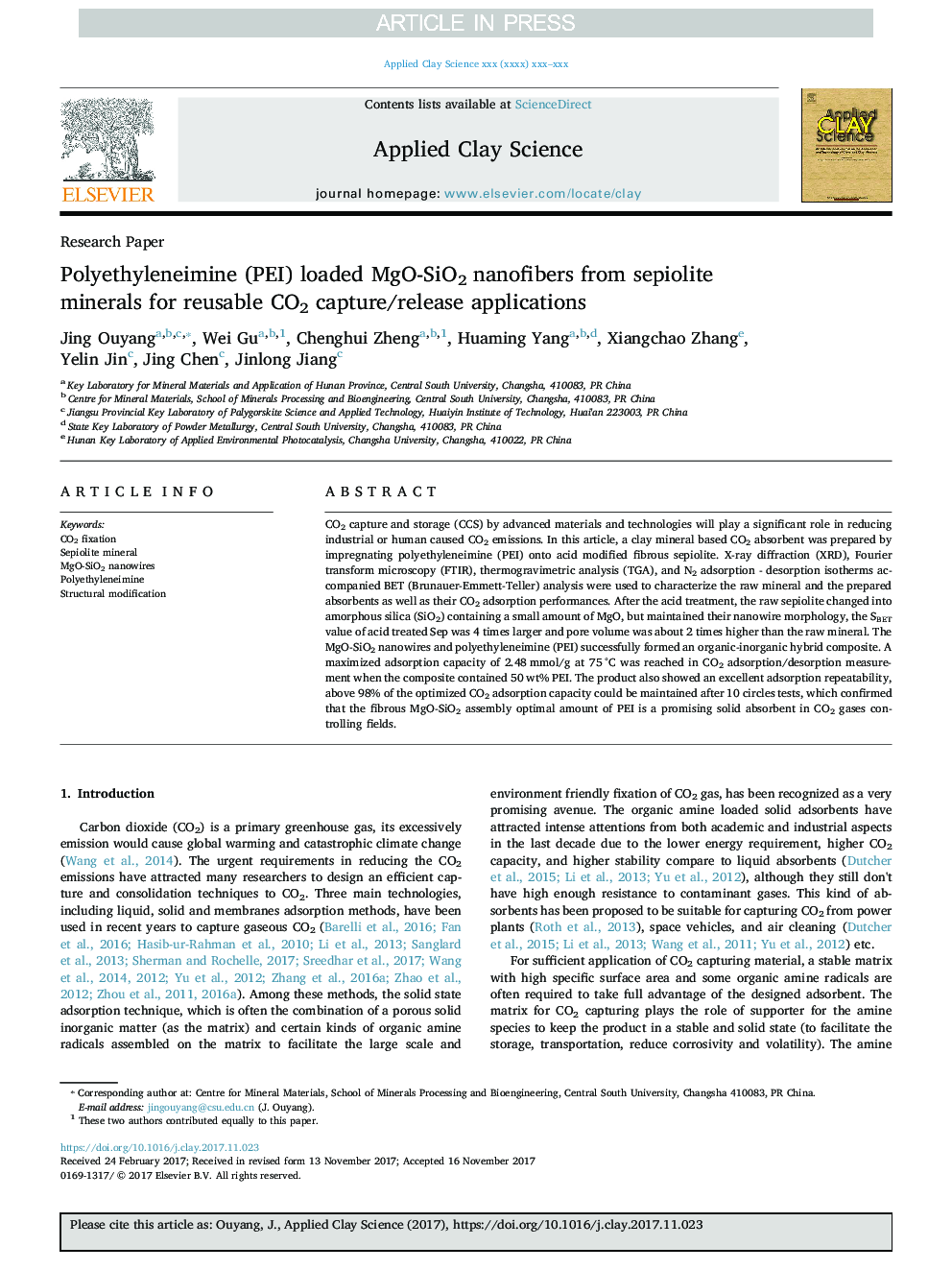| Article ID | Journal | Published Year | Pages | File Type |
|---|---|---|---|---|
| 8046344 | Applied Clay Science | 2018 | 9 Pages |
Abstract
CO2 capture and storage (CCS) by advanced materials and technologies will play a significant role in reducing industrial or human caused CO2 emissions. In this article, a clay mineral based CO2 absorbent was prepared by impregnating polyethyleneimine (PEI) onto acid modified fibrous sepiolite. X-ray diffraction (XRD), Fourier transform microscopy (FTIR), thermogravimetric analysis (TGA), and N2 adsorption - desorption isotherms accompanied BET (Brunauer-Emmett-Teller) analysis were used to characterize the raw mineral and the prepared absorbents as well as their CO2 adsorption performances. After the acid treatment, the raw sepiolite changed into amorphous silica (SiO2) containing a small amount of MgO, but maintained their nanowire morphology, the SBET value of acid treated Sep was 4 times larger and pore volume was about 2 times higher than the raw mineral. The MgO-SiO2 nanowires and polyethyleneimine (PEI) successfully formed an organic-inorganic hybrid composite. A maximized adsorption capacity of 2.48 mmol/g at 75 °C was reached in CO2 adsorption/desorption measurement when the composite contained 50 wt% PEI. The product also showed an excellent adsorption repeatability, above 98% of the optimized CO2 adsorption capacity could be maintained after 10 circles tests, which confirmed that the fibrous MgO-SiO2 assembly optimal amount of PEI is a promising solid absorbent in CO2 gases controlling fields.
Related Topics
Physical Sciences and Engineering
Earth and Planetary Sciences
Geochemistry and Petrology
Authors
Jing Ouyang, Wei Gu, Chenghui Zheng, Huaming Yang, Xiangchao Zhang, Yelin Jin, Jing Chen, Jinlong Jiang,
